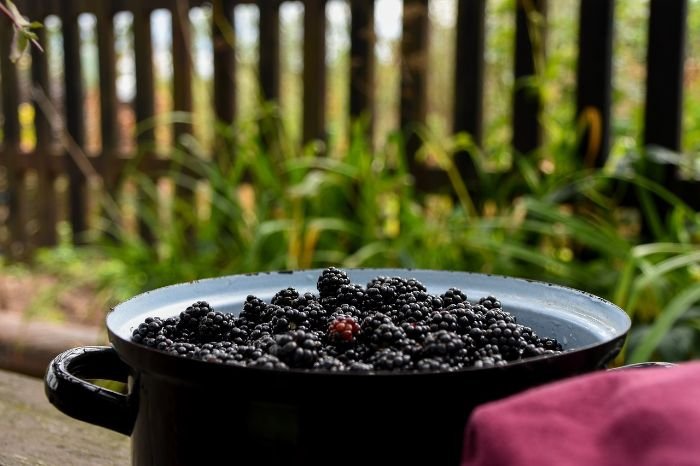Do you wish your garden was both beautiful and useful? With edible landscaping, you don’t have to pick just one! It brings together plants that look nice and give you something to eat. This way, your outdoor space can be both eye-catching and helpful.
Edible landscaping is not just a fad; it creates a lively place that delights all of your senses. It merges the beauty of regular gardens with the usefulness of a farm. This lets you enjoy the perks of two different types of gardens.
We’ll show you how edible landscaping makes your garden lovely and practical. You’ll learn the good things about adding edible plants to your garden. And we’ll share how to make and take care of a garden like this.
Key Takeaways:
- Edible landscaping combines both aesthetic appeal and practicality in garden designs.
- By integrating edible plants into your landscape, you can create a sustainable garden that is visually stunning and productive.
- Benefits of edible landscaping include increased biodiversity, cost efficiency, health and nutrition, and reduced environmental impact.
- When selecting plants for edible landscaping, it’s important to consider both their visual appeal and productivity.
- Designing an edible landscape involves integrating edibles into existing landscapes, creating focal points with edible plants, and layering plants for depth and interest.
Table of Contents
About Edible Landscaping
Welcome to edible landscaping, where beauty and function meet in gardening. It’s a cool way to mix edible plants like veggies, fruits, and herbs into your garden. This makes your outdoor space look great and provides fresh food.
Edible landscaping mixes beauty and usefulness. It’s more than just planting pretty flowers. It’s about growing things you can eat while making your garden look nice.
This type of gardening is good for the environment. It helps attract good bugs and birds by using different plants. This makes a healthy ecosystem right at home.
Growing your food this way saves money and is good for the planet. It’s also fun and teaches you about gardening. Plus, you get fresh, healthy food right from your garden.
Having fresh fruits and veggies from your garden is really good for you. It makes it easy to eat food that’s good for your body. This can lead to a healthier life for you and your family.
Starting with edible landscaping opens up a lot of cool options. It works for all types of spaces, big or small. Let’s see where this adventure in gardening takes us. Where beauty and useful plants come together to make something amazing.
Selecting Aesthetically Pleasing Edible Plants
Choosing the right edible plants is key for a beautiful garden that also feeds you. Pick plants that look good and give you healthy food. This way, your garden will be both pretty and useful.
Criteria for Choosing Edible Plants
Think about your garden’s sunlight when choosing plants. Some plants need lots of sun, while others like some shade. Matching plants to your garden’s sunlight helps them grow well together.
Knowing your soil is important too. Test your soil to learn its pH and what nutrients it has. This tells you which plants will grow best in your garden’s soil.
Consider how much water your plants need. Some can take on a little drought, while others like it wetter. Grouping plants by their water needs helps you use water more wisely.
Balancing Beauty and Productivity
It’s important for your garden to look good and grow good food. Choose plants that are pretty and tasty. Find plants with beautiful leaves, rich colors, and interesting shapes to brighten your garden.
Try plants that do double duty, like Swiss chard with its colorful stems. This plant is both lovely and can be eaten. Herbs like lavender smell great and can be used for cooking or relaxing teas too.
Select plants with both looks and good harvests for the best garden. Your edible garden will look great and provide fresh food.
Fruits for Edible Landscaping
When you think of edible landscaping, think fruit trees and berry bushes. They add beauty and tasty treats to your yard. These plants are not just pretty with their colorful fruits. They also let you enjoy picking your own fresh fruits from your garden. Now, let’s look at great fruit trees, pretty berry bushes, and climbing plants with edible fruits for your yard.
Best Fruit Trees for Visual Appeal
Fruit trees make your yard look great and give you lots of fruit. Apple, cherry, and peach trees are some top picks. They give you tasty fruits, beautiful flowers in the spring, and colorful leaves in the fall. These trees will make your garden look lovely and provide fruits at different times of the year.
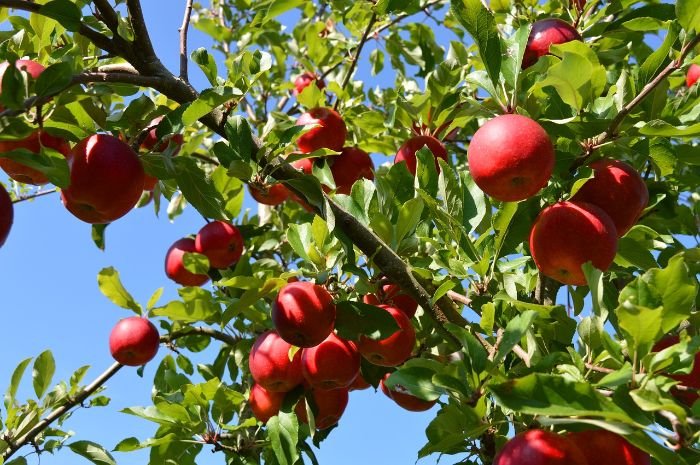
Attractive Berry Bushes
Consider berry bushes for your edible yard. Blueberries and raspberries are great choices. They have tasty berries, pretty leaves, and colorful fruits. Plant them by themselves or mix them with others for a lovely look. With their bright colors and sweet flavors, they’ll make your yard even more beautiful.
Vines and Climbers with Edible Fruits
Don’t forget about growing up. Vines like grapes and passionfruit give you food and cover. You can have them climb over trellises or walls. They add green everywhere and give you delicious fruits. These plants make your garden beautiful and full of food.
Pick the right trees, bushes, and vines for a beautiful, fruitful garden. It doesn’t matter if you’re new to gardening or not. These plants will bring joy and fresh fruits to your home. They turn your outdoor area into a lovely spot that provides both looks and flavors.
Vegetables that Enhance Garden Beauty
In this part, we’ll look at veggies that make your garden pretty and offer food. You can mix in flowers and leafy greens to make a beautiful, working garden. Now, let’s start!
Ornamental Vegetables
Ornamental veggies add looks and food to your garden. Rainbow chard has bright stems in red, pink, orange, yellow, and white. This makes garden beds or pots light up. Purple cabbage’s deep purple leaves stand out against green. These veggies look good and taste good in your meals.
Colorful and Textured Leafy Greens
Kale and Swiss chard add color and texture to your garden. They come in purple, red, and green. Their leaves look interesting and create a lively garden. Placing them well adds color and a tasty, healthy touch to your meals.
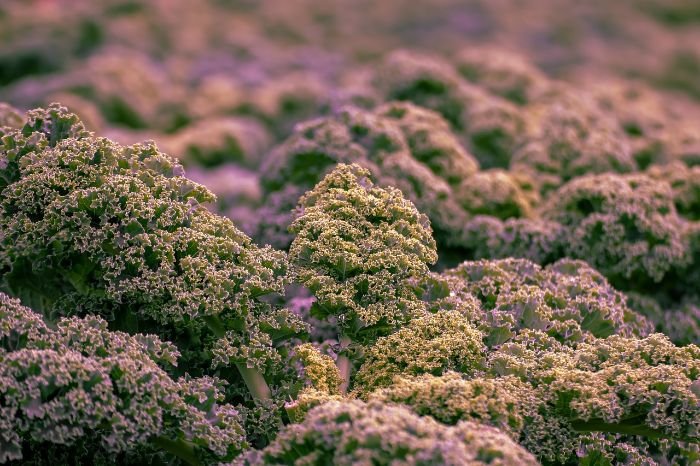
Edible Flowers for Color and Variety
Adding edible flowers brings color and options to your garden. Use flowers like nasturtiums, calendulas, and pansies for color and shape. They make your garden and your food look great. You get a beautiful garden and fun recipes with edible flowers.
By using these colorful, edible plants, you make a lovely and useful garden. Mixing ornamental veggies, leafy greens, and flowers not only looks good. It also gives you plenty of fresh and healthy food.
Herbs for Culinary and Visual Delight
This section talks about herbs that make food tasty and gardens pretty. They smell good and look nice, adding to your garden’s beauty. You will also learn how to plan herb borders and paths to use these herbs well in your garden.
Aromatic Herbs with Attractive Foliage
Adding aromatic herbs to your garden is a great idea. They not only look good but also smell nice. For instance, rosemary and lavender are great choices. Rosemary has thin green leaves and smells fresh. Its leaves stay green all year, making it a good pick.
Lavender has grayish-green leaves and purple flowers. It adds elegance and attracts helpful insects. These herbs are beautiful and great for cooking. They are essentials for herb gardens.
Herbs with Unique Textures and Colors
Herbs with different looks and feels make gardens more interesting. Basil, for example, has bright green leaves and smells great. Its leaves look shiny and fresh.
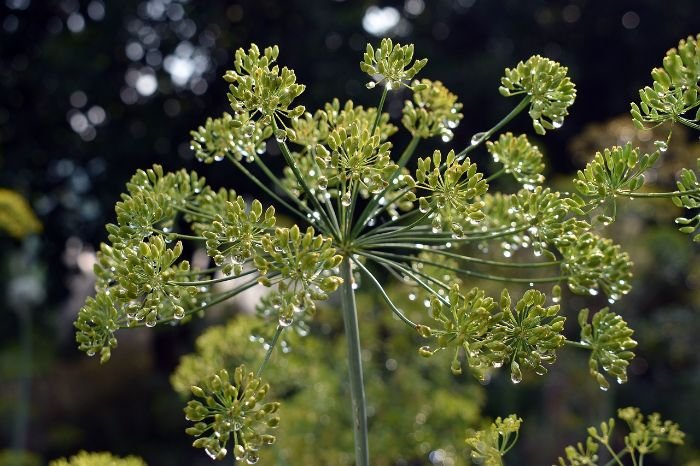
Dill adds a special beauty to gardens. Its soft, thin leaves and yellow flowers are eye-catching. They draw in useful insects.
Designing Herb Borders and Pathways
It’s key to plan how herbs fit in your garden. Think about the layout. You can arrange herbs in rows or groups to set garden boundaries. This adds beauty and makes caring for them easy.
You can also add charm by making herb pathways. Plant low herbs like thyme or chamomile on them. Use stones to make paths look nice. It guides people through your herb garden.
Planning herb borders and pathways well turns your garden into a beautiful, useful space. It’s a place that feeds both your body and your senses.
Designing an Edible Landscape
Designing an edible landscape is fun and combines beauty with tasty edibles. By mixing edibles into landscapes, you create a lovely and food-rich place. It’s a way to make your space look nice while growing your own food.
Integrating Edibles into Existing Landscapes
Mixing edibles with your current landscape is about balancing looks with use. You can plant them in flower beds, borders, or lawns. This way, your space keeps looking great while you add food plants.
Choose plants that fit your space in size, color, and texture. For instance, colorful Swiss chard can be a good match for your flowers.
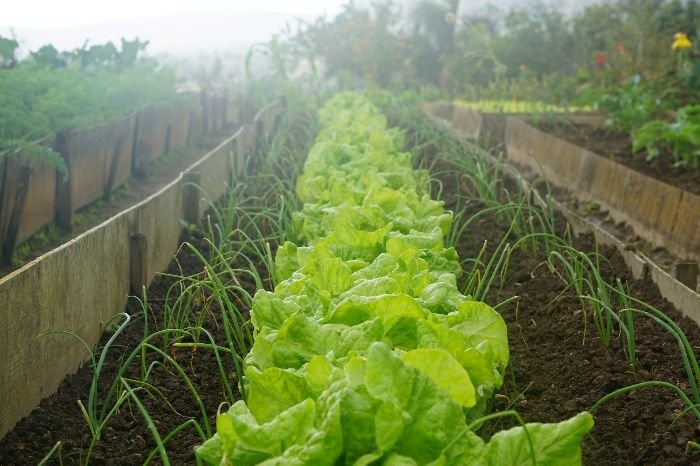
Don’t forget about looking after your edibles. Make sure you can easily get to them to pick, and that they have the right kind of soil, light, and water. With good planning, your edible and ornamental plants can grow together well.
Creating Focal Points with Edible Plants
Using edibles as central points in your landscape is interesting and eye-catching. Try fruit trees like apples or pears as focal points. They look good, make shade, and bear tasty fruits.
You can also use unique edibles in your beds, like artichokes or sunflowers. They add drama and can start conversations in your garden.
Edibles with bright colors and unique shapes, such as rainbow Swiss chard or purple basil, make great focal points too. They look good and can be used for cooking, adding flavors and textures to your meals.
Layering Plants for Depth and Interest
Layering plants creates a garden that looks deep and interesting. Combine plants of different heights, textures, and colors. This makes your garden look like there’s a lot going on.
Put tall trees and bushes at the back for a lush green backdrop. Add herbs and flowers for extra color and texture in the middle layer.
Put low-growing plants in the front to fill up space and add green cover. This technique makes good use of space. It lets you grow lots of different edibles in a well-designed garden.
Planting and Care Tips for Edible Landscaping
To grow a great edible garden, you should follow some key tips. This includes getting the soil ready, proper watering, and regular maintenance.
Soil Preparation and Fertility
First, clean up the area by pulling out any weeds. Then, loosen the soil with a fork or tiller to make it easier for roots to spread.
Next, add compost or organic matter. This makes the soil fertile, helping your plants grow strong and yield plenty of food.
Watering and Mulching Practices
Watering right is crucial for edible plants. Check the soil’s moisture often and water deeply when needed. Deep watering fosters deep root growth.
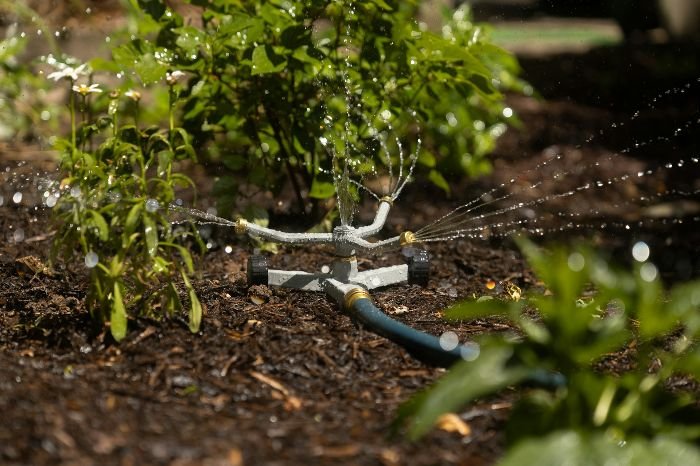
For water-saving and weed-fighting, mulching is key. Spread organic mulch around plants to keep the soil moist and keep weeds at bay.
Pruning and Maintenance for Health and Beauty
Cutting back and tidying up your garden is also important. It keeps plants in good shape, boosts growth, and lets in more sunlight.
Remove any sick or dead parts from your plants to keep them healthy. Doing this, plants stay disease-free and grow better. Prune them sometimes to maintain their beauty and strength.
Don’t forget about the regular care too. Fertilize based on plant needs, watch for pests, and deal with diseases right away. This keeps your garden lush and productive.
By sticking to these tips, you’ll enjoy a gorgeous and fruitful garden. It’ll be a source of joy as well as fresh, tasty food.
Conclusion – Creating Your Edible Paradise
Edible landscaping is a cool way to make your garden both pretty and useful. It lets you grow your own food in a beautiful place. This way, you can have a garden that looks great and gives you fresh food.
This kind of gardening helps wildlife, saves money, and is good for your health. It turns your outdoor space into a green edible paradise. No matter if your space is big or small, you can start growing food in a pretty way.
To begin, pick plants that look good and give food. Make sure your garden is pretty and useful with fruits, veggies, herbs, and edible flowers. They will make your place lovely and give you tasty treats.
Plan your garden well, mix food plants with regular ones, and pick some special spots. Take good care of your plants by preparing the soil, watering, and pruning. This way, your garden will grow well and look beautiful.
Choose edible landscaping for a nice and useful garden. It’s a great way to have a garden that is lovely to see and gives you food. So, start your edible garden now and enjoy the beauty and food it brings.
FAQ
What is edible landscaping?
Edible landscaping mixes pretty plants with ones you can eat. This includes veggies, fruits, herbs, and flowers you can eat.
What is the goal of edible landscaping?
It’s about making beautiful gardens that also grow food. These gardens look great and give you fresh food.
What are the benefits of edible landscaping?
It makes your garden more diverse and saves money. Growing your food is good for you and the planet.
How do I choose edible plants for my landscape?
Pick plants that match your garden’s sunlight, soil, and water needs. Choose plants that look good and provide food.
What are some examples of fruit trees suitable for edible landscaping?
Good-looking fruit trees include apples, cherries, and peaches.
Can I incorporate vines and climbers with edible fruits in my edible landscape?
Yes, you can grow vines like grapes for food. They also make your garden look interesting.
Can I use edible flowers to add color and variety to my garden?
Yes, flowers like nasturtiums make your garden colorful. You can eat them too.
How can I effectively incorporate herbs into my garden design?
Make herb borders and pathways. This makes herbs a beautiful part of your garden.
How can I integrate edible plants into my existing landscape?
Place edible plants in with your flowers or in pots. It makes your garden both pretty and useful.
How can I enrich the soil in my edible landscape?
Use compost and organic matter to make the soil rich. This helps your food plants grow well.






